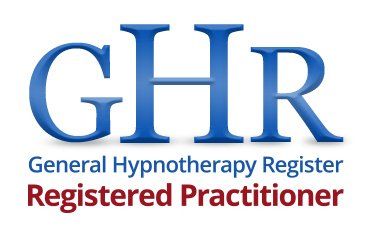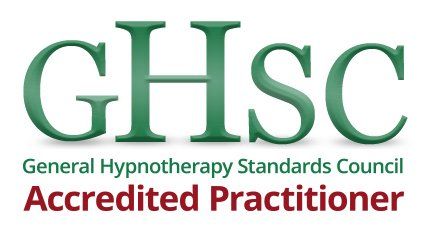Frequently Asked Questions about Hypnotherapy
Here are some of the most commonly asked questions about what to expect from Hypnotherapy.
1. What does the Hypnotherapy session feel like?
The experience feels different for different people. Some people feel a floating sensation, some do not. Others may feel sleepy, some do not. Most people feel relaxed and at ease, that is commonly reported. What is most important is to know that how you feel is not an indicator of how effective it is.
2. Can I get “stuck” in hypnosis?
No! You have complete control the whole time. You can talk, move your body, get a tissue, and even get up and leave (I have had clients who had to stop to go to the toilet!).
3. How does it work?
Hypnosis is not magic, it’s science! Even, Sigmund Freud's Psychoanalysis therapy is based on the concept of hypnosis. It works by creating a burst of brain waves that are the same as when you’re in the REM (rapid eye movement). You experience REM every night you go to sleep. The REM state is inducing deep relaxation. These brain waves allow you to access your subconscious mind. Your body is relaxed, but your mind is wide awake and ready to help you. Hypnotherapy is easy and anyone can do it, you will see for yourself when you do it too!
4. What if I don’t “go deep” enough?
Don’t worry about how deep you go. I want you to forget all about that. It’s really not important. The depth of trance is not linked to results at all. So, don’t get hang on, Am I deep enough? Just tell yourself the truth: This is working, and it will absolutely work for me. Just know that it is effective. So just believe in yourself and the process of Hypnosis.
5. What if I think I already know the reasons behind my issue?
What makes Hypnotherapy amazing is that even if you think you know what is holding you back, you see it in a COMPLETELY new way. As memory is reconstructive, the way you viewed your experience as a child can be different to what you would say or interpret it differently. You can gain a wider viewpoint and take labels and pill off layers from your beautiful being. Hypnotherapy allows you to change your perspective and, ultimately, change your beliefs. For many clients, they go back to scenes that are entirely different from what they expected. Just relax and trust that your subconscious mind will show you exactly what you need to see.
6. What if I go back to scenes that are painful or scary?
If you go back to memories from your life that are related to events like sexual or physical abuse, or other trauma, it is important to remember that you are not reliving that scene. You are simply reviewing it, and you are safe. I will support you and create a safe space for you to express your emotions and heal, you will be OK. I am there with you.
7. When will I start to see changes?
There are three types of change, and every person is different:
Immediate: You feel a massive shift right away as immediate changes in your physiology, thoughts and behaviours right in the session.
Incremental: You see consistent shifts every day, or over time.
Retroactive: You don’t see the shifts right away, and then one day you suddenly look back and see all the things that are different in your life.
8. What is the difference between face-to-face and online sessions?
Online sessions are available via Zoom, and this technique is equally effective as face-to-face sessions. Zoom is a free platform and full instructions will be provided to you when you book your appointment.
9. What if our online session gets disconnected?
If our online session gets disconnected, or you may drift into sleep if you are very relaxed, but you will notice that you are not hearing my voice, and you may open your eyes slowly. Zoom will automatically reconnect our session once the internet is up and running again. Please note, disconnections don’t often happen, but are possible on either side. To avoid this issue, I will ask you to provide me more of your contact details, so I can reconnect with you.
10. How long does a Hypnotherapy session take?
Each Hypnotherapy session lasts between 1-2 hours to 2.5 hours. For that reason, I will ask you block off a full 2,5 – 3 hours in your calendar to make sure you’re not rushed. You leave the session with your personalised audio that you commit to listening to every day for at least 21 days. The reasons behind this will be explained in our pre-session talk.
11. How many sessions do I need?
Hypnotherapy is designed to give you a powerful breakthrough and create significant changes in your life. Some clients may need more than one Hypnotherapy session, depending on what we are working on. When it comes to working with complex issues, it is highly recommended having more sessions, which is why I created various programmes.
Frequently Asked Questions about Rewind Therapy
Here are some of the most commonly asked questions about what to expect from Rewind Therapy.
1. What am I having several traumatic events that haunt me?
Try to be clear which one troubles you the most. You can check in with yourself, which one is the most significant for you at that moment that you want to work on. Once you have filed one traumatic event, it is recommended to wait 2 weeks and then deal with the next one and so on.
2. What if I just can't do the rewind part fast?
That can be because you are trying to precisely reorganise the forward film, and you shouldn't. So practice the rewound part first, allowing yourself just 5 seconds. Once you have got it, do the whole loop from the beginning of the forward film. Don't worry, we will practice it before the actual process. I will show you.
3. What if I get too upset doing the forward film?
That is the reason I would like you to stay detached. If you can't, Rewind Therapy will work, as long as you can get to the end. The Rewind Therapy will also work if you find yourself at times detached only. It is much less traumatic if you can remain detached during the forward film.
4. What if I was an observer rather than the direct victim?
To complete the Rewind is easier because you do not need to see yourself in the forward film, and do not need to feel that you are in the rewound film. So, all you need to do is make sure the film has a good starting point (before it happened). It is required to put everything in the forward film: sounds, smells, images exactly as you recall the event. As you reach the end, simply watch the film being rapidly rewound back to the new starting point.
Frequently Asked Questions about Brainspotting
Here are some of the most commonly asked questions about what to expect from Brainspotting.
1. What is Brainspotting?
Brainspotting is a brain and body base technique for healing emotional trauma. It is helping you to release trapped emotions. A new technique that effectively deals with the root cause of the psychological stress and the trauma. It is based on: where you look, or your eye position in context with deeply held emotional experiences that are usually not reachable by the traditional talk therapy. If you have ever felt stuck, having strong anxiety, repeating an unhealthy patterns or habits, then Brainspotting is a suitable therapy to help you break free from those cycles. The Founder of Brainspotting is David Grand, Ph.D.
2. Does Brainspotting really work?
Brainspotting may be an effective therapy for working on stress, anxiety, trauma, performance anxiety, unhealthy habits, phobias, and emotional and mental health imbalances. Brainspotting may assist you in releasing sensory residue or unresolved experiences and opens us up to new insights, a shift in mindset, balance, regulation and improved overall health.
3. What happens in a Brainspotting session?
During a Brainspotting session, the Brainspotting practitioner/therapist will help you identify an issue to work on. While focusing on the issue, you will notice how you feel, sense and experience the issue in your mind and body as you pay attention inwards. Then the eye position/brainspot associated with this issue will be identified. A brainspot is an active network in the brain that leads to a deep release of the issue where it is stored in the mind and body.
Individuals report having a more profound release with Brainspotting than with traditional talk therapies. It is described as the brain re-stabilising, resourcing, and rebooting itself (neuroplasticity) during Brainspotting. This processing often continues to happen after the session has ended for a couple of days/ hours. The doorway has been opened, so do not be surprised that information will continue to come up and out for releasing and healing. You will receive a pre-care and an after-care document.
4. How many sessions of Brainspotting are suggested?
The number of Brainspotting sessions can vary from person to person. So, you may notice changes in one session and others can see improvement within 4 to 8 sessions. It is based on what you would like to achieve and the issue we work on.


